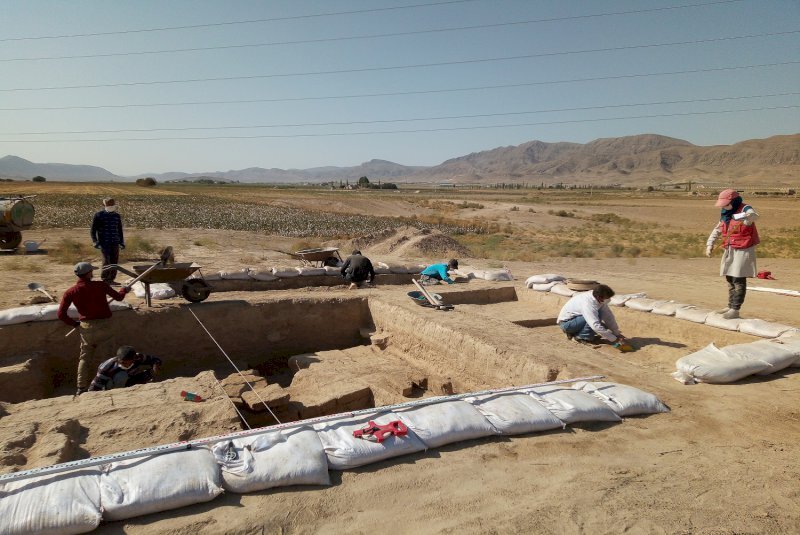2,700-year-old military fortress unearthed in northeast Iran

TEHRAN – Archaeologists have recently unearthed the ruins of a prehistorical fortress, estimated to date some 2,700 years in Tepe Rivi, northeast Iran.
During their tenth season of excavation on Rivi archaeological hill, archaeologists have found remains of a military fortress, assessed to date back to 2,700 years ago, CHTN quoted North Khorasan province’s tourism chief as saying on Tuesday.
Ali Mostofian said the fortress once belonged to Medes, ancient Iranian people who inhabited an area known as Media between western and northern Iran, adding that evidence concerning residents of the 900 century BC has come to light as well.
In addition, the cultural heritage experts discovered an Iron Age cemetery in the southeast of the site, and engraved seals in the central part of the Ravi site, the official said.
“Covering an area of more than 110 hectares, Rivi is one of the most important historical sites in the northeast of the country. The site is situated three kilometers west of the town of Ashkhane,” the official said.
“Here, further archaeological research on the one hand, and the creation of tourism infrastructure on the other, can improve our understanding of the historical identity and the growth of the tourism industry in the region.”
The preliminary results of excavations conducted by Iranian and German archeologists indicate the existence of a continuous settlement in the Ravi from about 900 BC to the end of the Sassanid era (about 1500 years), the official explained.
“The importance of the Ravi area is that its size reached more than 110 hectares during the Achaemenid period (c. 550– 330 BC). In fact, it was one of the important cities of the Achaemenid period in the northeast of the country.”
“The historical site of Rivi was officially registered on the national list of cultural heritage in 1346 (1967-68),” he said.
Previous archaeological excavations have delivered significant results, including a large area inhabited for about 2300 years from about 1700 BC to the end of the Sassanid era. Initial archaeological research on Rivi started in 2012. Since then, teams of Iranian and German archaeologists accessed remains of settlements from the Bronze and Iron Ages, the Achaemenid, the Parthian (247 BC–224 CE), the Sassanid dynasty (224–651 CE), and the early Islamic period.
So far, professionals in the fields of archeology, geography, geophysics, geomorphology, and ecology from the [Ludwig Maximilian] University of Munich; the [Free] University of Berlin; the University of Tehran and Shahid Beheshti University have worked in Rivi archaeological site.
In 2019, a joint mission of Iranian and German archaeologists discovered historical clay stamps in the Rivi region, which are estimated to date from the Achaemenid and Parthian eras. The seals were found alongside clay urns in a large hall, and the seals are imprinted in a variety of geometric patterns [depicting] plants, animals, and human figures.
Evidence suggests that residents of this area sealed the urns that were loaded with particular goods and then tied them with ropes, the archaeologist said. In May 2021, the restoration of some ruined structures, particularly those dating from the Achaemenid era, started. Moreover, a team of restorers began work last December on earthenware and other relics discovered from the site.
AM
